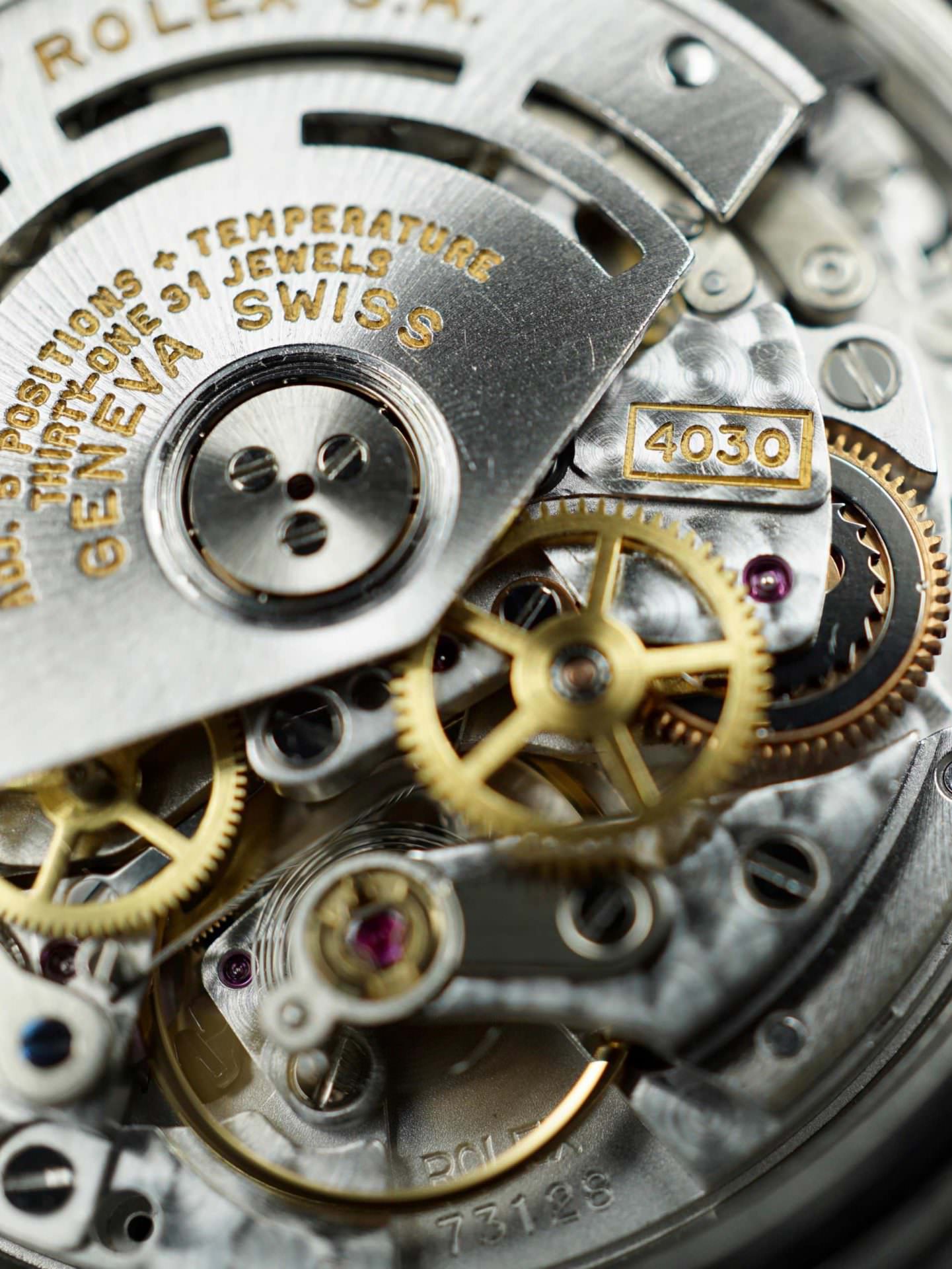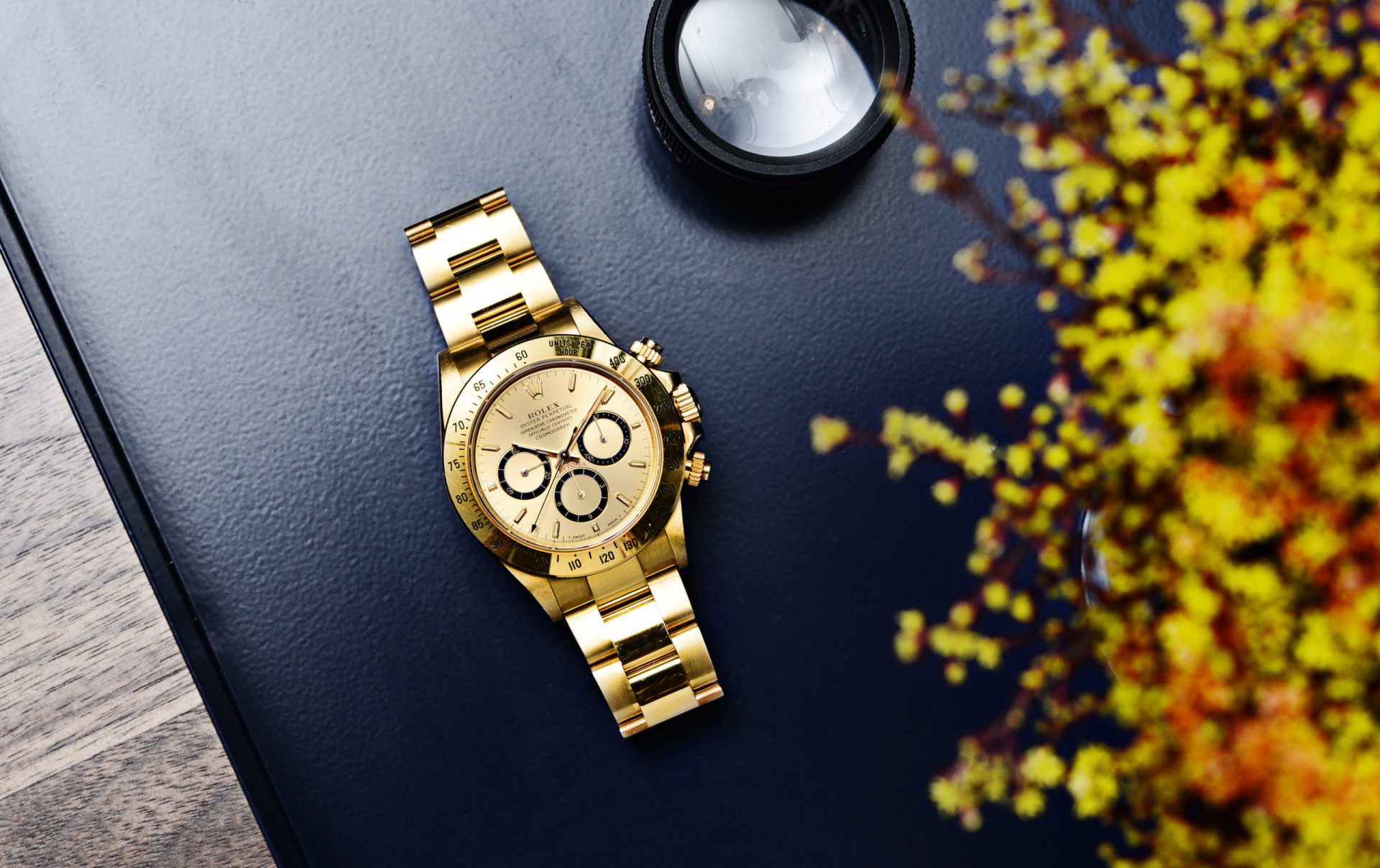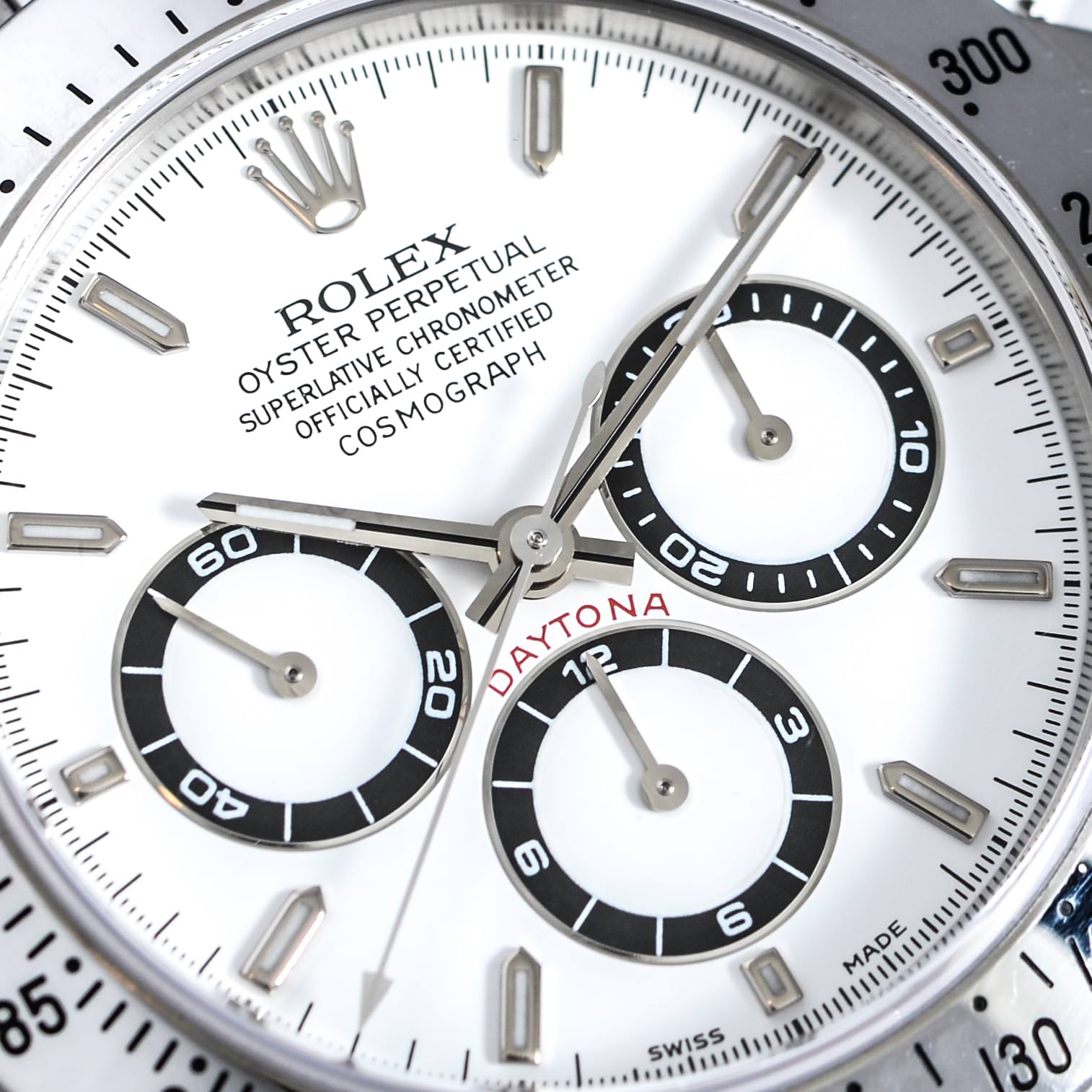With collectability for the triple register timepiece at an all-time high, we now take the opportunity to explore the family of references that brought the Daytona into the modern era. Through the integration of updated mechanics and materials with the collection’s core DNA, Rolex birthed a true legend of contemporary sports watchmaking.

This new generation of Daytona was first unveiled at the Baselworld fair of 1988 and took the world by storm with its numerous differentiating factors. At first glance, it was obvious that the racing chronograph had been treated to a complete redesign, yielding an entirely new form. Complete with protective crown guards and a scratch-resistant sapphire crystal, this updated breed was far more rugged than its plexiglass crystal-fitted predecessors, and at 40 mm across, far more substantial on the wrist.
Within the case, collectors were treated to a similarly contemporary dial design, characterized by the presence of contrasting subdial surrounds. Not only was this new face attractive, but also historically significant, in that the first two dial iterations fitted inside the updated Daytonas were also the last two to have been produced by Singer. Given how this dial manufacturer is ultimately responsible for some of the most iconic designs that defined many of the Daytona’s most celebrated years of production, the initial presence of their dials is certainly appreciated by collectors of today’s market.



Though the timepiece’s aesthetics were definitely dazzling, it was what could be found beneath the caseback that truly took the world of horology by storm, beginning a new and necessary chapter of the Daytona’s tale. In place of the hand-wound, Valjoux 72-based calibers which powered the collection’s previous generations, Rolex had opted for a self-winding Cal. 400 El Primero movement, making this the first automatic Daytona in the brand’s history.

While perhaps not a true in-house caliber, the Zenith manufactured movements found inside this generation are far from “off the shelf,” seeing as Rolex is said to have made over 200 modifications to the base caliber. Between the genius of the El Primero’s design and the Wilsdorf brand’s intervention, the Cal. 4030 was brought to life, boasting 31 jewels and a 52-hour power reserve.
Among the most desirable variants of the famed Zenith Daytona are those produced in 18k yellow gold, which have an objectively more luxurious appearance and feel on the wrist. This is why Rolex fitted such gold cased examples with their most daring dials, including those crafted from porcelain, and those adorned with precious stones. Having said, there’s no arguing with the versatility afforded by the more conventional black or champagne dial variants, and their undeniably timeless appearance.

Today, this generation of Daytona is more collectible than ever, thanks in part to the reintroduction of contrasting subdial surrounds, as seen on the ceramic bezel Ref. 116500 series of 2016. With numbers commanded by Zenith Daytonas continually on the rise, the watch stands out as a true blue chip of the back catalogue, and a damn good looking one at that.

Check out 'Reference Tracks' our Spotify playlist. We’ll take you through what’s been spinning on the black circle at the C + T offices.

Never miss a watch. Get push notifications for new items and content as well as exclusive access to app only product launches.
Sign up for our newsletter to receive updates and exclusive offers